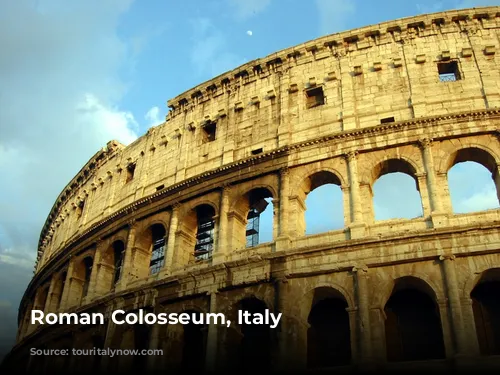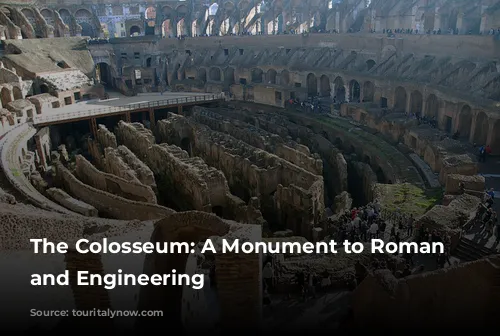The Colosseum, also known as the Flavian Amphitheater, stands as a testament to the grandeur and engineering prowess of the Roman Empire. This iconic landmark, once the world’s largest amphitheater, still commands attention even in its present state of disrepair. Despite the ravages of time and the plundering of its stones, the Colosseum remains a captivating spectacle, attracting visitors from every corner of the globe. It continues to serve as a reminder of Rome’s glorious past and is considered one of Italy’s most treasured symbols.

A Legacy Built on Blood and Spectacle
The Colosseum’s construction was a deliberate act of symbolism, intended to distance the ruling Flavian dynasty from the notorious Nero. This imposing structure was built on the site of Nero’s lavish park, the Domus Aurea, a stark contrast to the emperors’ desire for a new, more morally acceptable image. Completed in 80 AD, the Colosseum, a marvel of Roman engineering, boasted a seating capacity of 55,000 to 80,000 spectators, representing a cross-section of Roman society. The emperors, eager to appease the populace, staged gladiatorial contests, mock sea battles, executions, and re-enactments of famous battles. The Colosseum became a stage for spectacles of brutality, with events lasting up to 100 days, captivating the imaginations of the ancient Roman masses.

From Bloodshed to Sanctuary
The era of gladiatorial combat within the Colosseum eventually came to an end, giving way to a new chapter in the structure’s history. Over the centuries, the Colosseum served as a refuge for the homeless, a workshop, a Christian shrine, and even a fortress. It served as a reminder of the past, its stone walls bearing witness to the transformations of time.
A Glimpse into the Arena’s Underbelly
Venturing beneath the Colosseum’s surface reveals a network of underground tunnels known as the Hypogeum. These tunnels were a hidden world, where gladiators and wild animals awaited their fate. Imagine the anticipation and dread that must have filled the air in these cramped spaces, where prisoners, convicts, and slaves braced themselves for the spectacle above. The Hypogeum also served as a passageway for the actors, assistants, and slaves who ensured the smooth operation of the Colosseum’s elaborate performances.
The Colosseum’s Highest Perch
The Colosseum’s third ring offers visitors a unique perspective on this monumental structure. Accessible through special tickets or tours, the third tier provides breathtaking views of the arena’s interior and the surrounding cityscape. Imagine being transported back to ancient Rome, witnessing the roar of the crowd from this vantage point, the gladiators clashing in the arena, their movements a blur of color and motion.
Visiting the Colosseum: A Must-Do Experience
The Colosseum remains a testament to the power and might of the Roman Empire. Its ancient stone walls, scarred by time and the passage of centuries, whisper tales of gladiatorial combat, political intrigue, and the enduring spirit of a bygone era. Whether you are a history buff, an architecture enthusiast, or simply a traveler seeking an unforgettable experience, the Colosseum should be at the top of your list.
Here are some tips for planning your visit:
- The Colosseum is open daily from 9:00 am to sunset during the summer months, and from 9:00 am to 4:30 pm during the winter.
- Expect long queues, especially during peak season, so be prepared to spend some time waiting.
- To fully appreciate the Colosseum’s history and grandeur, consider taking a guided tour or using an audio guide.
- Allow plenty of time to explore this iconic landmark and soak in its historical significance.
The Colosseum remains a timeless symbol of the Roman Empire, inviting us to step back in time and marvel at the engineering feats and social dynamics of a civilization that has left an indelible mark on the world.
